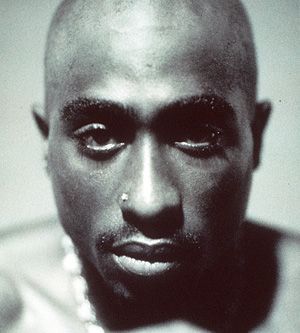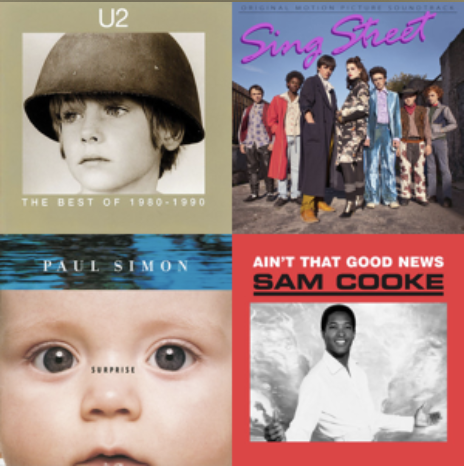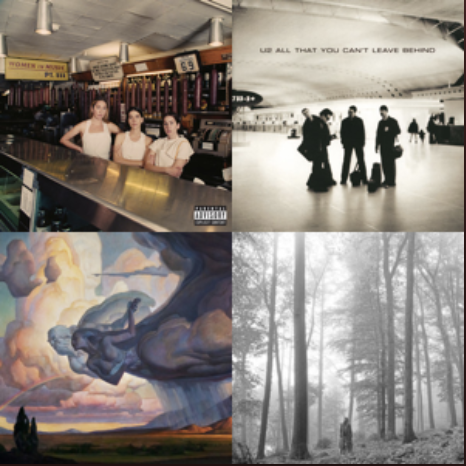Editor’s Note: This paper was originally presented as part of Calvin College’s Festival of Faith and Music. This biennial conference brings together musicians, critics, journalists, artists, and listeners to discuss and celebrate popular music—hoping to bridge the gap between the church and popular art. The Curator is delighted to share thoughtful music criticism from the 2015 Festival. Over the coming months, The Curator will publish one paper a week in order to continue and extend the conversation from the Festival. On a range of artists and songs, each paper engages and interprets popular music from a faith perspective.
Imagine Green Day releasing a country album, or Taylor Swift releasing 1990’s emo. Imagine the sound of Johnny Cash singing with Sigor Rós. Imagine the lyrics of Coldplay in the diminished fifth of Nine Inch Nails. Imagine Lil-Wayne writing gospel. Imagine a black metal hymnal.
Unless you are “Weird Al” Yankovic, these absurd artistic decisions are unthinkable. Even before there are categories or genres, we know that music works when form and content meet. Form and content need to be in tune with one another or the audience cannot concentrate on what’s going on. Whether the rhythm of My Brightest Diamond or the a-rhythm of Math Music, the aura of Sigor Rós or the dirge of Blut Aus Nord, they make sense because, whatever the music is trying to be, it is being that clearly: a sign of clarity is being able to recognize principles holding the music together. This is as true for Bach as for John Cage. Even Cage wants his un-music to make sense as un-music. Whenever form and content coalesce, and they have a near infinite capacity for this, and there is something there to listen to.
All of this helps re-situate a question that Lecrae and others are asked without end: “How can such a thing as Christian rap exist?” This is asked in many ways, but that’s the gist. Somehow, for some reason, the intersection of Christian themes and hip-hop raises a concern over form and content.
I was fortunate to interview Lecrae, and was determined not to ask him that question. But the question began to reverse itself. So in the middle of our conversation, I asked “So, what’s up with hip-hop? How can hip-hop sustain the company of Tupac, Jay-Z, Wu-Tang, and Lecrae? How is it so flexible a genre?” After thinking it over a moment, Lecrae replied. “Hip-hop has always been about the disenfranchised.”
I want to clarify what Lecrae and hip-hop mean by “disenfranchised,” even reconsidering the term. I’ll do that indirectly by way of the two formal distinctions that set hip-hop apart from other genres, moving from Tupac to Eminem. In part, this is an historical assessment.
What does Lecrae mean by disenfranchised? First one has to think about the voice that hip-hop speaks from, the distinct grammatical person, as in first-, second-, or third-person it uses. Lyrics use all three personal vantages, and genres prefer one or another: first-person in pop-music; second-person in Civil War spirituals; and third-person in ballads and Arcade Fire.
With the first-person perspective, it’s significant who the person is. Think of The National’s “I need my girl.” Who is the “I” who needs his girl? Even if the The National, when writing the song, were missing their girl, the “I” is crucially distinct from Matt Berninger. The songs are not about him. But here and elsewhere, the first-person “I” works cathartically. We can all possess the “I.” An entire stadium of fans can sing along with “I need my girl,” or Coldplay’s “I will fix you,” even if at the moment they have their girl right next to them, or have already fixed the the problem. They can own the song by taking on the lyrical vantage point of “I.”
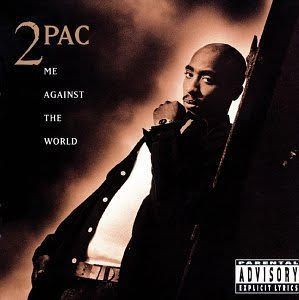 In hip-hop, the “I” is not sharable or primarily cathartic. The voice that hip-hop takes on is historical. Tupac writes about himself. He is the “I.” It is not an artistic attache through whom the listener can sing along with, having a sense of owning the song himself. Tupac is writing about himself, not so that you can sing with him, but so that you can listen to him. The first-person of hip-hop conveys a sense of the artist being a witness, telling you what he saw.You’re not meant to think that you were there as well when Tupac’s friend got shot, when Wu-Tang went to war or when Jay-Z became king. And you’re certainly not meant to think you
In hip-hop, the “I” is not sharable or primarily cathartic. The voice that hip-hop takes on is historical. Tupac writes about himself. He is the “I.” It is not an artistic attache through whom the listener can sing along with, having a sense of owning the song himself. Tupac is writing about himself, not so that you can sing with him, but so that you can listen to him. The first-person of hip-hop conveys a sense of the artist being a witness, telling you what he saw.You’re not meant to think that you were there as well when Tupac’s friend got shot, when Wu-Tang went to war or when Jay-Z became king. And you’re certainly not meant to think you are
them. It was Tupac’s friend who got shot. Don’t pretend to be Tupac. Listen to Tupac.Though Tupac speaks about himself, he speaks as a young black male, as in his first album’s first song, “Young Black Male.” He represents the experience of that community. But instead of the choral, plural “we,” Tupac, and hip-hop after him, decided to stand in-front and represent personally that neighborhood, ghetto, city (; e.g., Jay-Z’s Brooklyn’s Finest). Because of this, the listener often gets confused. Should the listener sing along or is the listener being sung to/about? Hip-hop is not quick to clarify.
The second part of hip-hop is how the writer, the first-person “I,” defines himself. This is not just self-expression, and it is certainly not an impersonal, abstract “self” defining. It is fundamentally auto-biographical; it is auto-nomous, self-naming. Sometimes it looks like masculine preening. Jay-Z: “I’m the new Sinatra.” In his first album, Tupac spells out the acronym Nigga: Never Ignorant, Getting Goals Accomplished. Wu-Tang is nothing to fuck with. They’re all still # 1, still on top. In part, this names the community that the artist writes from, as when Eminem represents the 311. And sometimes this is definition by negation. Tupac writes: “Made to feel inferior, but we’re superior … Honour a man that who refuses to respect us.”
Tupac began certain self-definitions that hip-hop cannot get away from: “I’m a nightmare,” “I’m what you made me,” “They call me violent…the violent’s what I gotta be” and “You’re watching the makings of a psychopath.” In just his first album, and then in Me Against the World, he makes himself something to fear; he digs into a gun fight with police, sees brothers get shot, loves and protects his mother and threatens anyone who talks back. And like his mother taught him, he better be respected. After a while, a character develops which later hip-hop artists have taken as their prototype.
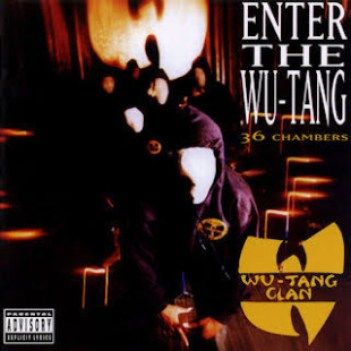
Tupac’s character is picked up by the Wu-Tang Clan and the Wu-Tang Clan is Tupac’s violence engorged. What is Wu-Tang all about? A friend of mine, who has studied Wu-Tang far more than I, has answered, “I – I think they are trying to say that they are nothing to mess with.” Their songs repeat this over and again. The violence that Wu-Tang describes is intricate and almost juvenile in its extravagance, aspiring for avant-garde. Tupac made threats; Wu-Tang carried out the hits.
Following the lyrical wars of Tupac and Wu-Tang Clan, a new character evolves. A new king ascends to the throne. No longer content to be a modern Billy the Kid, he’s the new Rockefeller. He’s Jay-Z. His threats are brief and subtle; he protects La Familia. Concern for mothers and hatred toward fathers has been around since Tupac. Jay-Z, however, has daughters. This introduces a new tension between family and hip-hop. He also continues to have visions of empire, even divine metamorphosis: “You in the presence of a king/Scratch that, you in the presence of a God.”
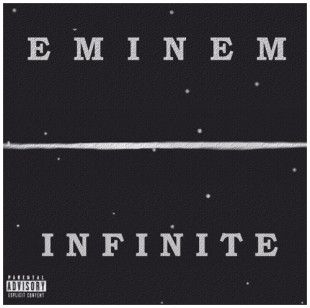
These lyrics, and the tension between them, re-occur endlessly in Eminem. “Mockingbird” is a testament to both familial sorrow and visions of empire: “Cause all I ever wanted to do was just make you proud/Now I’m sitting in this empty house, just reminiscing” and “Why be a king, when you can be a god?”
Eminem writes about being a rap god with all the usual superlatives, but to all these self-definitions he gives a twist. Eminem is ambiguous about who he is talking about; for from early on, he gave an independent existence to his hip-hop personae, Slim Shady. Dating back to Africa Bambaataa, Tupac and the rest have always had MC pseudonyms. But whenever Sean Carter spoke about Jay-Z, he was talking about himself, under a different name. The DJ handle was a mask, a fake ID, a title.
Eminem’s Slim Shady had a personality. Slim Shady speaks to Eminem and Eminem speaks back, a routine where two persons are played by one artist. Slim Shady is a separate bag of motivations, vices and threats. He is a self-sufficient ego. At times Eminem and Slim seem to converge, as in the song “Real Slim Shady.” But even there, the question is who Slim Shady is. And it ends with Eminem admitting, “Guess there’s a Slim Shady in all of us.”
In every case, Slim Shady is the enemy. “Eminem” and “Slim Shady” stand in-twine like a wretch and a tyrant. In the 1998 EP of “Slim Shady,” (not the LP), there’s an opening skit where Eminem wakes up to Slim Shady’s demonic voice telling him to look into the mirror. “You’re nothing without me,” the voice laughs. The scene approaches the disturbing mood of horror. Music screeches. Eminem screams “get out.” Slim Shady is a ghoul, a demon. Eminem finds in himself the mature schizophrenia that Tupac first confessed to in “Death around the Corner:”
“I see death around the- corner, anyday
Trying to keep it together, no one lives forever anyway
Strugglin and strivin, my destiny’s to die
Keep my finger on the trigger, no mercy in my eyes
I can’t give up although I’m hopeless/I think my mind’s gone.”
Before Eminem introduced Slim Shady, he wrote songs that spoke of rapping forever. His first album was all about him being infinite. After Slim, he writes about going in and out of rehab, in and out of relationships and on and off the stage. He threatens to quit once and for all, then promises to come back smart and cocky and then apologizes to his mom and his daughter. Phrases repeat like “I ain’t halting/Till I die of exhaustion” and “I can’t stop / Till I drop.” Somehow, he knows that what he’s doing is fatal. He wavers. Slim is the “the nightmare [in which he] fell asleep and then woke up still in.” And though the nightmare is an infinitely creative expanse, it begs to be escaped from.
Eminem (or Slim?) writes:
“Tragic portrait of an artist tortured
Trapped in his own drawings
Tap into thoughts
Blacker and darker than anything imaginable
Here goes a wild stab in the dark”
What hip-hop artist escapes this assessment? What more can rap do now, except offer darker and darker thoughts? We ask Lecrae how can you be a Christian and a hip-hop artist. Eminem asks how he can be a hip-hop artist and sane.
A sense of “disenfranchised” emerges from these lyrics. It is about far more than universal suffrage or economic poverty, though certainly those come up. There is distress over mothers & daughters, neighborhoods and empires, victory and death. With its economic tone, disenfranchised might technically be incorrect. The themes suggest dis-ease or dis-integration.
What’s more – and this theme has followed us from the start – the disenfranchised artist keeps reaching, through his auto-nomous, for enfranchisement. He fights his way out, breaks the arm of injustice, battles his own demons. And when he’s made it to the top, he realizes that somewhere along the way, he dropped his crown, forgot his family, or lost his mind. These are threads as old as Antigone, the psalter, spirituals. The beggar in tension with becoming king.
If being the victim that breaks his own chains and forges his own crown, captures the aspiration of hip-hop, the prospect for Christian hip-hop grows slender. Theologically, breaking one’s own chains is just another act of inexcusable violence, and becoming a god is the promise of the serpent. Is Christian hip-hop just another understandably charitable attempt to bring all sounds to Christ? A Christian artist has to appreciate something very complex: if, for the time being, the formal structures of a field reject the content of gospel.
Through self-definition, the artist raises himself up from disenfranchised to enfranchised. From having no father to being a father; from nothing to the kingdom; from being a wretch to being a god. This is the direction of hip-hop.
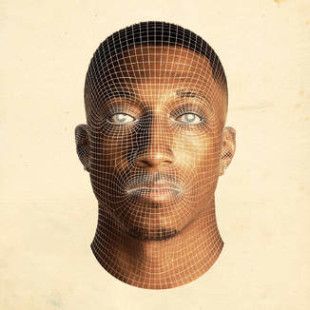
And then we have from Lecrae’s title song, “Anomaly”:
“I didn’t know who was inside me either
Striving to be the captain, […]
Tryna get me a throne of my own so I can put my feet up
Thank God my kingdom was overthrown by The Soul Redeemer”
One cannot suppress the reaction to laugh. The overthrow of Lecrae by God is an all but comedic turn in hip-hop, an utter paradox. This happens nowhere in hip-hop; someone is rescued by being overthrown and taken captive, not by his own strength, but by another’s.
Recall the ambition of hip-hop. That through speaking about himself, and defining himself – through his auto-nomy – he may escape from, say, 8 mile and become a rap god. And here we have language that verges on a cliche of Christian evangelism.
But Lecrae keeps to the first person, and to the motif of self-definition. Though, like Eminem having to define two persons, Lecrae attributes his freedom by defining another, not himself. if Lecrae’s music sounds apologetic at times, it’s because when Lecrae defines himself, he knows that he has to define Christ. Another comedic turn: the schizophrenia of Eminem (and Slim) is re-written by Lecrae as the Christological motif of war between the Old and the New Adam.
“I’m gone get back out that dirt mayne
Not yet what I’m
Gonna be but not what I used to be
Bless his name forever who would
Chose me and start using me
Used to love my sinning fulla greed fulla
Hate
[…]
I’d
Be lustin for ya cousin if it wasn’t for his Grace
Yeah he took me outta
Nothin and he made ya boy a saint”
What does this do to hip-hop? Lecrae has changed, actually changed. There is no empty boast or materialistic hubris. Lecrae confesses that he is no longer nothing, no longer “disenfranchised.” But how long can the the theme of disenfranchisement continue when dis-enfranchisement becomes secondary, past, accidental to a real en-franchisement? If disenfranchisement principally held hip-hop together, what happens when an artist releases it? Eminem only re-situated the disenfranchisement. But from Real Talk to Gravity, and on occasion in Anomaly, Lecrae accepts disenfranchisement, accepts his fallenness and is raised up to where he can break open a new motif in hip-hop: worship. Nothing could be more heterodox to Tupac or Eminem than to have nothing to be angry at or afraid of.
Does this not, therefore, snap a necessary tension; doesn’t this end the music? Should we have been asking not how Lecrae survives in hip-hop, but “How does hip-hop survive Lecrae?” For it seems to me that when Lecrae introduces confession and worship into the genre, it must either fall into confusion or undergo a rending transformation. For while Eminem expresses the nightmare of hip-hop most exquisitely, and Kendrick Lamar wallows in the nightmare with an eerie post-violent passivity, Lecrae has woken up from the nightmare. And to those still asleep he must sound very strange.

